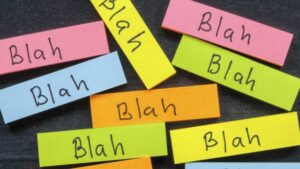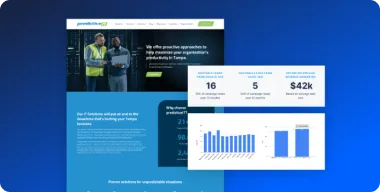The call-to-action or CTA is all about conversion. It’s part of a landing page to ensure that your site visitors take action, and more importantly, the kind of action you want them to take. They can take on various styles and sizes, but the end goal should be for you to do more with the calls to action on your website.
The Psychology of The Call to Action
There is psychology behind the call to action, which is important to be aware of. The general idea has to do with perceptual set theory. The mind expects to see a CTA because it is part of the logical progression on a website and you don’t want to disappoint anyone.
The mind is going to consider objects and experiences using a three-fold combination of processes, including selection, inference, and interpretation.
Remember that people have an innate sense of curiosity, so many people are going to click the call to action because they are curious as to what happens once they do so. Without having the call to action, people will often feel cheated over the experience of being on your website. This also means that everything leading up to the call to action provides anticipation, and the human mind is wired to expect positive experiences, which means it is important to provide one.
Different Ways a Call to Action Button Can Be Used On Your Website
A call to action can be one that adds an item to a cart, provides a free trial, or provides a download, among many others.
There are a few different ways to provide a quality call to action, and much of it depends upon what is going on and what the overall tone is for the website.
- Pack text with action words
- Wow with colors
- Unique button shapes
- Use LARGE, legible text
- Use first person speech “ME”
- Create a sense of urgency
All of these are important because they are going to create that desire to click on the button and answer the call to action. Boring words won’t get people’s attention. The colors and shapes are also important, and if the text is not legible, people will have no idea what they are supposed to do.
Further, people want to feel involved and take a very self-centered approach when viewing a website, so therefore it is important to see the word “ME” or “MY” as opposed to “YOU.” This is because the brain automatically sees “you” as someone else. Further, any kind of sense of urgency makes people want to take action that much faster, which means discounts and the use of “today only” can have a dramatic and positive impact.
Use Emotional Appeals in Your Website’s Call to Actions
Everyone is emotional and therefore it is important to provide emotional appeals within the call to action on your website. A study recently performed by HubSpot demonstrated that using plain language such as “download” or “submit” is considerably less effective – and this study spanned more than 40,000 websites.
It’s not just about design and placement. The message needs to be emotionally charged because people are going to be more likely to tap on the button if they feel emotionally connected to the text.
- Fear – is a strategy that can be used, as long as is done tactfully so as not to scare a customer away. It is simply designed to get a person to fear that perhaps they are doing something wrong. Further, your solution is going to be design to remove the fear from them.
- Anger – Or irritation is another effective tool because it immediately hooks everywhere and ensures that they care enough to take action.
- Curiosity – is an emotional appeal that has worked for a number of large brands. This includes using a “?” (question mark) in order to ask people to take a peek or see what’s going on. Many people will do so simply because of the strong connection of curiosity.
- Love – can be a very strong emotion as well. eHarmony has done well with promising visitors the opportunity to feel love if they click on the call to action – and it can work in a number of other brands and industries as well.
With a stronger call action on your website, you are bound to do more and get more
These are some best practices to follow so that you create a more effective call to action button on your website. The most important is that the copy provides the desire for customers to click the offer. Further, the number of words used in the call to action should be basic, no more than five is preferred. Always start out with a verb in order to make sure it is action-oriented.
Need Some Help?
If you feel confused or overwhelmed, don’t be. Pronto has you covered. With over 1500+ WordPress websites under our belt, we can help you with all your WordPress needs and more. From Marketing all the way to Integrating platforms.
Schedule a call with one of our Pronto Experts and learn how we can secure your website so you can focus on your business.



